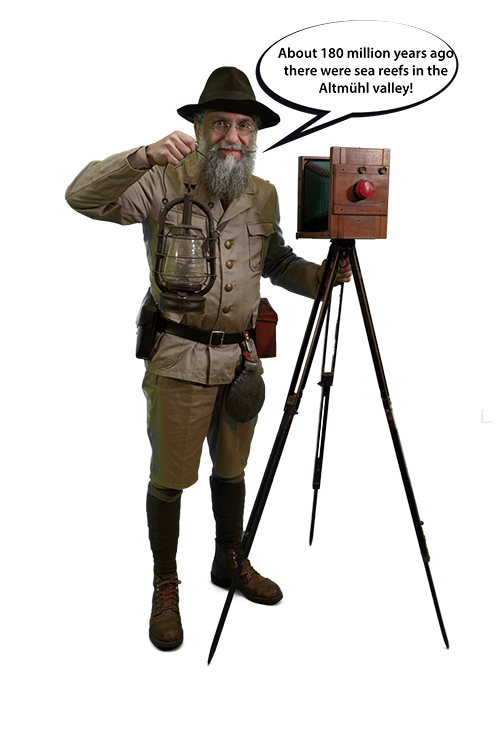
Discover the landscape around you with a 360° aerial view. Just click on the “To 360° view” button below this text to open the VR experience. If you use VR glasses, you can also view this image in virtual reality. To do so, select the corresponding icon (far right) in the control bar on your smartphone. Now position the smartphone e.g. in a Cardboard Viewer. Have fun exploring the prehistoric monuments in the landscape!

“The limestone and dolomitic rocks of the Altmühl Valley were once sea reefs during the Jurassic period, 180 – 140 million years ago. That’s why numerous fossils of former sea creatures are found here. But creatures of land and air were also at home here, such as the prehistoric bird Archaeopteryx and dwarf dinosaurs the size of a turkey.
Much later, about 1 million years ago, the river Danube began to carve its course through this region, cutting its way deep into the land. Around 200,000 years ago the course of the river changed. Since then the Danube has flowed through the Weltenburg Narrows and the much smaller Altmühl river occupied the old Danube valley.
Water hollowed out the limestone here and that is how the numerous caves were formed. These caves are of especial interest to me as an archaeologist. They were places of refuge for early Ice Age people who visited this region over 100,000 years ago. There people were Neanderthals – hunter-gatherers who roamed the tundra-like landscapes of the lower Altmühl valley, moving great distances to follow animal herds and find seasonal foods. They hunted large and small animals and fished with harpoons.
The first traces of permanent human settlement in the Altmühl and Danube valleys are known from the Neolithic period, from around 7500 years ago. At that time, the climate was mild and people settled down as arable farmers.
The old name of the river, Alcmona, was still used in the Middle Ages, in the time of Charlemagne. Probably Celtic in origin, this name means ‘still water’. The Altmühl today is famed for being very slow moving.


